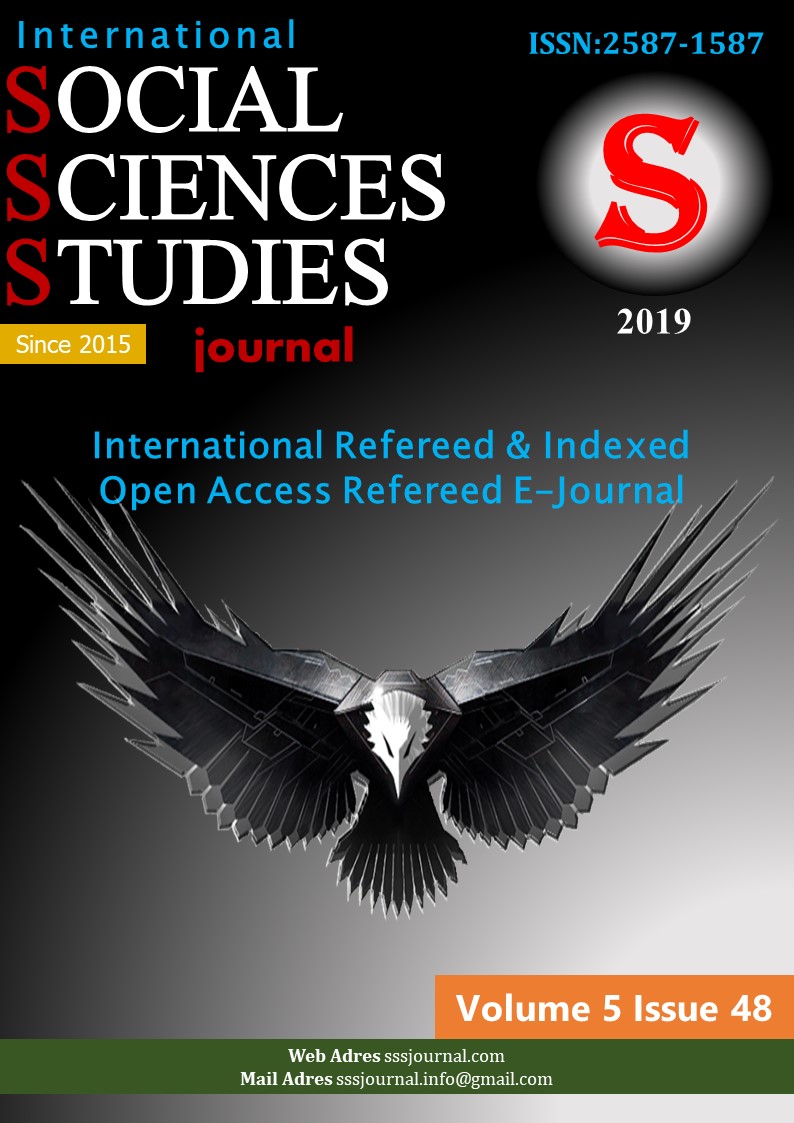Author :
Abstract
Sosyal bilimlerin bütün alanlarında olduğu gibi göç çalışmalarında da tarihselci yaklaşım araştırılan konuyu kendi bağlamı içinde anlamaya yardımcı olur. Böyle bir anlayışla yola çıkarak bu çalışmada da sanayileşmeyle birlikte başlayan, aşağı yukarı 200 yıllık bir süreçteki göçler modernleşme, kapitalistleşme ve ulus devlet kavramları etrafında tartışılmıştır. İrdelenen dönemlerdeki sosyo-ekonomik şartlar göz önünde bulundurulmak suretiyle ilgili kavram ve süreçlerin zamana ve mekâna bağlı olarak göç üzerindeki etkilerini anlamak amaçlanmıştır. Immanuel Wallerstein’ın “Dünya Sistemleri Analizi”, Michael J. Piore’nin “İkiye Bölünmüş Emek Piyasası” kavramı ve Wilbur Zelinsky’nin “Hareketlilik Geşiş Hipotezi” kuramsal tartışmanın temel dayanak noktaları olmuştur. Gelişmiş devletlerin, “Sanayi Devrimi” ile başlayıp “İleri Sanayi Toplumları” aşamasının sonuna varana dek az gelişmiş devletlerden kabul ettikleri vasıfsız ve yarı vasıflı işçi göçlerinin önü post-endüstriyel üretim sürecine geçişle birlikte kapanmıştır. Gelişmiş devletler tarafından yoğun şekilde doğal kaynak ve emek sömürüsüne maruz kalan az gelişmiş devletlerde yaşayan toplumların yaşam imkânlarındaki kısıtlamalar onların cazibe merkezlerine yönelik uluslararası göçünü tam olarak engelleyememiştir. Önceki düzenli işçi göçlerinin yerini düzensiz ve zorunlu göçler almaya devam etmiştir.
Keywords
Abstract
As in all fields of social sciences, the historicist approach in migration studies helps to understand the subject under investigation in its own context. In this study, starting with such an understanding, the migrations that started with industrialization in a period of approximately 200 years were discussed around the concepts of modernization, capitalization, and nation-states. It is aimed to understand the effects of related concepts and processes on migration depending on time and space by considering the socio-economic conditions in the periods discussed. Immanuel Wallerstein's “World-Systems Analysis”, Michael J. Piore's concept of the “Dualism in the Labor Market” ve and Wilbur Zelinsky's “The Hypothesis of the Mobility Transition” are the mainstays of the theoretical discussion. Starting with the “Industrial Revolution” and until the end of the “Advanced Industrial Societies” phase, unskilled and semi-skilled labor migrations, which the developed states accepted from underdeveloped states, were terminated with the transition to the post-industrial production process. Restrictions on the living conditions of the societies living in less developed states which are subjected to intensive exploitation of labor and natural resources by developed states have not fully prevented their international migration to centers of attraction. Previous regular labor migrations have continued to be replaced by irregular and forced migrations.
Keywords
- Adorno, T.W. (2011). Kültür Endüstrisi – Kültür Yönetimi (Çev: M. Ülner, N. Tüzel, E. Gen), İletişim Yayınları, İstanbul.
- Baudrillard, J. (2013). Tüketim Toplumu (Çev: H. Deliceçaylı, F. Keskin), Ayrıntı Yayınları, İstanbul.
- Bauman, Z. (2013). Modernite, Kapitalizm, Sosyalizm: Küresel Çağda Sosyal Eşitsizlik (Çev: F. D. Ergun), Say Yayınları, İstanbul.
- Beck, U. (2011). Risk Toplumu: Bir Başka Modernliğe Doğru (Çev: K. Özdoğan ve B. Doğan), İthaki
- Berger, P. L. ve Luckmann, T. (2016). Modernite, Çoğulculuk ve anlam Krizi: Modern İnsanın Yönelimi (Çev: M. D. Dereli), Heretik Yayınları, Ankara.
- Chudinovskikh O. & Denisenko, M. (May 18, 2017). “Russia: A Migration System with Soviet Roots”. Migration İnformation Source. (erişim: 29.07.2019). https://www.migrationpolicy.org/article/russiamigration-system-soviet-roots
- Erbaş, H. (2019). Gidişlerden kaçışlara Göç ve Göçmenler, Phoenix Yayınevi, Ankara.
- Giddens, A. (2008). Ulus Devlet ve Şiddet (Çev: C. Atay), Kalkedon Yayınları, İstanbul.
- Giddens, A. (2010). Modernliğin Sonuçları (Çev. E. Kuşdil), Ayrıntı Yayınları, İstanbul.
- Habermas, J. (2010). “Öteki” Olmak, “Öteki”yle Yaşamak (Çev: İ. Aka), Yapı Kredi Yayınları, İstanbul.
- Malešević, S. (2013). Nation-States And Nationalisms. Polity Press, Cambridge- Malden.
- Piore, M.J. (1978). “Dualism in the Labor Market : A Response to Uncertainty and Flux. The Case of France”. Revue Économique, V. 29. No.1: 26-48; (erişim:10.8.2019) doi: https://doi.org/10.3406/reco.1978.408371
- Piore, M.J. (1986). “The Shifting Graunds For Immıgration.” The Annals of the American Academy of Political and Social Science, Vol. 485:23-33. (erişim: 13.7.2019) http://www.jstor.org/stable/1045438
- Piore, M.J. (2008). Birds of Passage: Migrant Labor and Industrial Societies. Cambridge University Press, New York.
- Rusya Federasyonu İstatistik Servisi. (2019). “Uluslararası Göç”. (erişim: 30.07.2019). http://www.gks.ru/wps/wcm/connect/rosstat_main/rosstat/ru/statistics/population/demography/#
- Sennet, R. (2011). Yeni Kapitalizmin Kültürü (Çev: A. Onacak), Ayrıntı Yayınları, İstanbul.
- UN (2019). “International Migration 2019” United Nations: Department of Economic and Social Affairs Publications.(Erişim:05.08.2019) https://www.un.org/en/development/desa/population/migration/publications/wallchart/docs/Migratio nStock2019_Wallchart.pdf
- UNCHR Global Trends (2018). “Global Trends Forced Displacement in 2018”. UNCHR (erişim: 25.07.2019) https://www.unhcr.org/statistics/unhcrstats/5d08d7ee7/unhcr-global-trends-2018.html
- Wagner, P. (2005). Modernliğin Sosyolojisi (Çev: Mehmet Küçük), Ayrıntı Yayınları, İstanbul.
- Wallerstein, I. (2011). Dünya Sistemleri Analizi. (Çev. E. Abadoğulu, N. Ersoy), BGST Yayınları, İstanbul.
- Zelinsky, W. (1971) “The Hypothesis of the Mobility Transition”, Geographical Review, Vol. 61, No. 2 (Apr., 1971): 219-249.
